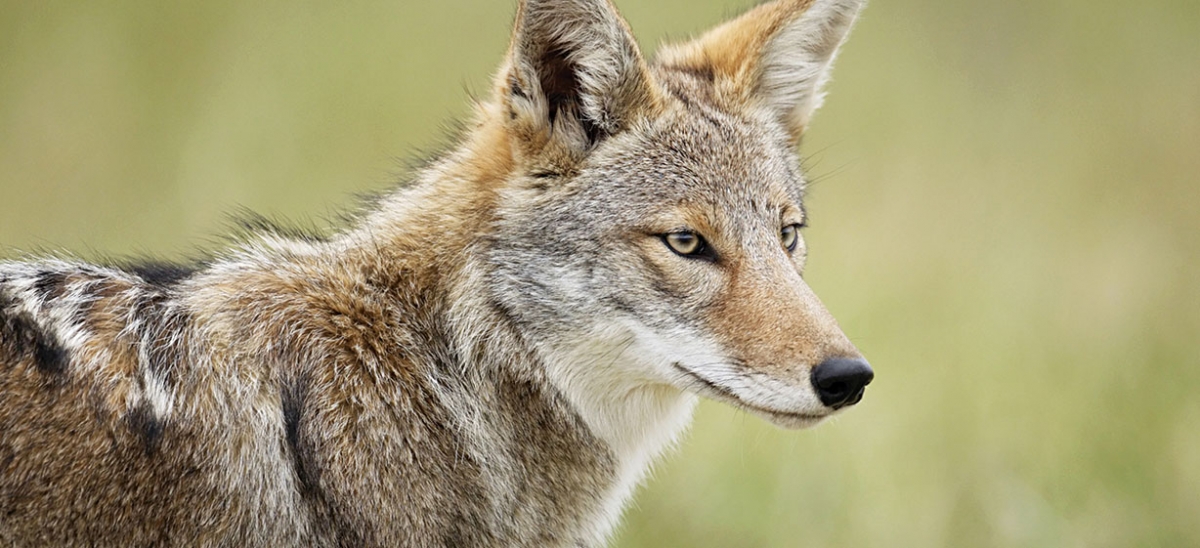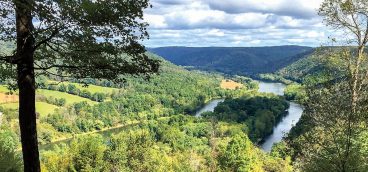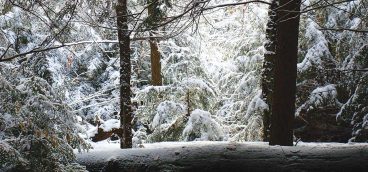Nature’s shape shifter

Pennsylvania stands near the center center of an intriguing and complex natural phenomenon. Across the recent span of roughly three decades, coyotes have exploited every available habitat here, from remote woods of the Allegheny National Forest to Pittsburgh’s urban fringe, while carving out a still-evolving ecological niche. All but unheard-of before 1980, coyotes now live in all 67 Pennsylvania counties and throughout West Virginia and Ohio in numbers that are difficult to pinpoint.
But the state’s wildlife authorities know there are a lot of them. As recently as 1991, Pennsylvania hunters and trappers killed fewer than 4,000 coyotes annually, according to Pennsylvania Game Commission estimates based on annual surveys. In 2012, the Commission estimated that more than 40,000 coyotes fell to hunters and trappers statewide.
“Coyotes were first documented in Allegheny County about 1981,” said Gary Fujak, the Game Commission’s wildlife conservation officer for the western third of Allegheny County, 247 square miles of hilly suburbs, sprawling from Findlay Township east to Pittsburgh’s Point. “There isn’t any part of my district where I haven’t been for some kind of [coyote] sighting or complaint.”
Fujak’s role is to protect wildlife that needs protecting and to defuse conflict with wild creatures whenever he can. But when it comes to coyotes, he’s somewhat “out of the loop.” They’re prolific and opportunistic, so, in a biological sense, they don’t need protection. And defusing conflicts amounts to basic human education about how to co-exist with these resilient wild canids.
“When people call me about coyotes, they want somebody to get rid of them,” Fujak said. “All I can say is, ‘What would you like the Game Commission to do? This animal is here to stay. Let’s think about how we can minimize the potential to attract them to your home.’ ”
Suburb-dwellers who didn’t anticipate wildlife encounters on their cul-de-sac often find that resigned approach surprising. After all, a coyote’s “proper” place on the American landscape and in the American imagination is cactus-studded desert or windswept plains of the West. But with the exception of Homo sapiens, the coyote may be the most adaptable mammal on the continent. It can live anywhere and eat anything from the typical diet of mice, squirrels, birds, insects and fruit to garbage, unrestrained house cats and deer. Afford coyotes an ecological vacuum and they’ll fill it with coyotes.
It’s an ecological vacuum, wildlife managers and biologists say, that explains the coyote’s expanding presence in western Pennsylvania. When George Washington (representing England at the time) was confronting the French for control of the Ohio country west of the Alleghenies, all that vast expanse was old-growth forest. In 1750s America, wolves hunted in that forest and still do only a few hundred miles northward in Canada. With incredible speed and resolve, American settlers cleared the trees. When the original woods were gone, so were the wolves.
Sensing a void that now resembled the open spaces of the West and presented no competition from wolves, coyotes probed eastward, completing a reverse (in relation to European settlement) west-to-east colonization of the eastern states in about a century. As Fujak observed, they began showing up around Pittsburgh in the early 1990s.
“Coyotes filled a niche that went vacant when people felled the Eastern forests and exterminated wolves that lived there,” Fujak said.
That rapid occupation of so much new territory is amazing enough. But what most captivates scientists who study eastern coyotes is that they’re an intriguingly different animal than the one that left the West. They’re bigger.
According to the Arizona-Sonora Desert Museum, a world-renowned zoo and educational center near Tucson, desert coyotes seldom weigh more than 25 pounds. But male coyotes here often weigh twice that much. Records from the Clearfield County-based Mosquito Creek Sportsmen’s Club competitive coyote hunt, during which about 100 coyotes from all across western Pennsylvania are weighed every winter, include two males over 50 pounds killed in 2009 and a 51-pound male taken in 2010.
Female weights (lighter than males in all wild canids) present even more compelling evidence that something about the eastern coyote is different and new. Dr. Jonathan Way, a research scientist at Clark University in Worcester, Mass., studies eastern coyote ecology. Way analyzed coyote weights from across North America and found that the average weight of female eastern coyotes is 21 percent heavier than males from outside the region.
Way has an explanation for the eastern coyote’s robust physique—it’s part wolf. He and other researchers compared genetic material from eastern coyotes to western coyotes, wolves and dogs. Their conclusion is that today’s coyote inhabiting New England, the Mid-Atlantic and the central Appalachians has ancestral origins in both the immigrant western coyote and eastern wolves that were never eliminated from Canadian forests. Way explains that as the diminutive western coyote moved east and north, some encountered the remnants of surviving wolf packs around Algonquin Provincial Park in Ontario, Canada. Mates were difficult to come by in the decimated populations, and when coyotes appeared some wolves made the best of the situation and wolf-coyote hybridization happened.
“Coyotes in the East today display a genetic continuum, with a greater proportion of wolf genes in New England and less in the Mid-Atlantic and farther south,” Way said.
Way, who also directs Eastern Coyote Research, an educational project that seeks to spread understanding of eastern coyote ecology, doesn’t like to use the term “eastern coyote.”
“I prefer the term ‘coywolf’ for animals in the Northeast because it more accurately describes their genetics as statistically intermediate between coyotes and wolves. It’s the perfect term.”
Eastern wolves that coyotes encountered in southern Canada weigh as much as 75–80 pounds. The resulting coyote-wolf hybrids not only inherited greater size and strength from wolves, they also retained their coyote ancestors’ opportunistic adaptability. The still-changing outcome is a successful modern predator that can exploit young forests returning to the East, somewhat as wolves did in Washington’s time, and simultaneously thrive in cities and towns.
“There is no question that coyotes in western Pennsylvania have wolf genes but less than in New England,” Way said. “It appears that the northern front of coyote expansion, which encountered Canadian wolves, met up with the southern front in western Pennsylvania. It was the northern front that became associated with hybridization and is spreading wolf traits southward.”
The blend of western coyote, eastern coyote and wolf genes is so complex and continuously re-combining that Way refers to eastern North America’s wild canids as “canine soup.” Size isn’t the only physical advantage that eastern coyotes employ. Their skulls and teeth are more wolf-like than their western relatives, making large prey, like deer, more available to them, at least under favorable conditions.
Some hunters’ organizations fear that today’s well-equipped coyote takes more than its share from the state’s deer herd. Goaded by that concern, the Pennsylvania House of Representatives last winter approved a bill authorizing a bounty on coyotes, but the bill, so far, has not emerged for a vote in the senate. If enacted, the legislation would authorize the first bounty payments on wildlife in Pennsylvania since 1966. “Past efforts to eradicate coyotes around the country show that it’s a futile effort,” Fujak said. “That’s why the Game Commission did not support legislation authorizing the bounty on coyotes.”
Fujak acknowledges that coyotes do take deer, especially fawns, but points to evidence showing their impact is insignificant statewide. “The proportion of Pennsylvania hunters’ total annual deer kill made up of 6-months-old fawns remains constant every year, as it has for a long time, even before coyotes established a presence here,” Fujak explained. “That would not be the case if coyotes were taking an increasing number of fawns.”
While the Game Commission opposes the bounty concept, it doesn’t discourage or limit coyote hunters. It’s legal to hunt coyotes year-round in Pennsylvania, including Sundays, 24 hours a day, with no bag limit. Way doesn’t support a bounty either, but says there’s another value in coyotes he’d like to see acknowledged, especially in urbanized landscapes like Fujak’s Allegheny County district. “I think these animals are more beneficial than they are given credit for. In urban areas, you have burgeoning deer numbers and limited options to deal with deer. Urban coyotes are being ignored for their ecological service as allies in managing over-abundant deer.”
Fujak said the calls he fields tell him suburban residents are less concerned about deer predation than about their own safety around coyotes. Coyote attacks on humans are rare across North America, but coyotes have approached or bitten dozens of urban dwellers in southern California, causing one fatality, and incidents with aggressive coyotes are increasing in other parts of the Northeast.
As Fujak noted, there is no way to eliminate the coyote from the landscape as a whole, and Way would argue that’s not even desirable. But residents can make their properties less attractive to coyotes, reducing the potential for encounters.
“Pittsburgh is a good place for coyotes to be,” Fujak said. “The habitat we have here, wooded hillsides and corridors are good hunting places for its primary foods—rodents, birds and deer when they can get them. But we also have the human-provided element. There’s road-kill everywhere, and garbage. If you want to discourage coyotes, manage your garbage intelligently and never, ever deliberately feed them. They don’t need the help, but they go where it’s easiest to get what they need.
“I got a call from a man who complained that a coyote was too close to his house,” Fujak continued. “People perceive that in itself as a ‘coyote problem,’ but I think that phase is over-used. I keep an open mind toward these complaints, but try to communicate the reality of what to expect, and how to minimize any small degree of risk.”
The Game Commission reports one attack on a person, with minor injuries, in Pennsylvania in the three decades since coyotes established a continued presence here.
However, coyote conflicts and shape-shifting canine genetics weren’t what came to mind for Yvonne Pilarski, when Fujak stopped by recently to check a report of a black bear called in by one of her Collier Township neighbors. The conversation soon turned to the coyotes she could hear from her hilltop neighborhood.
“When we had that big red full moon, you could hear the coyotes move all the way up the valley howling and yipping,” she reflected. “It was such an experience just to hear that. It made Pittsburgh seem like a wilder kind of place.”





